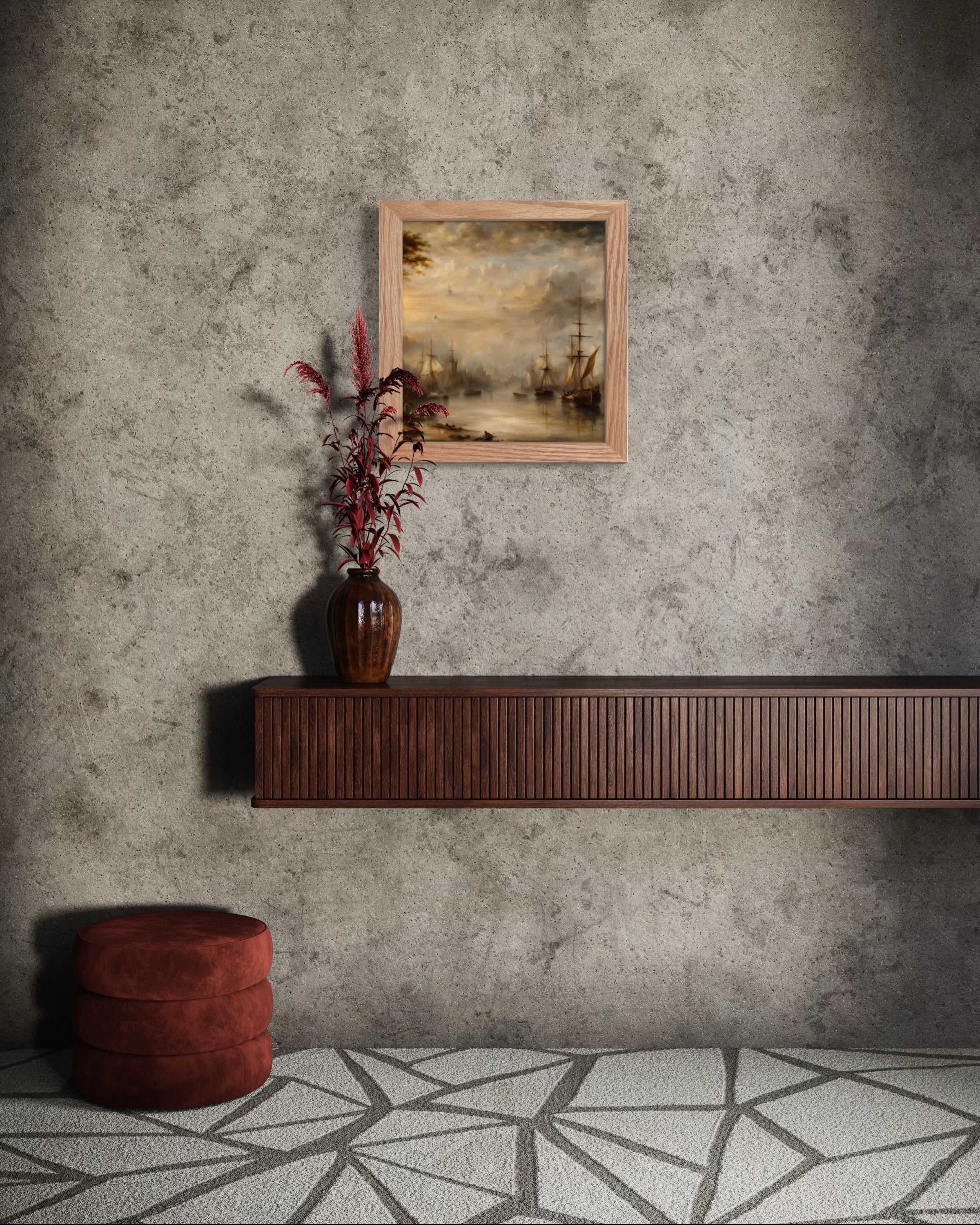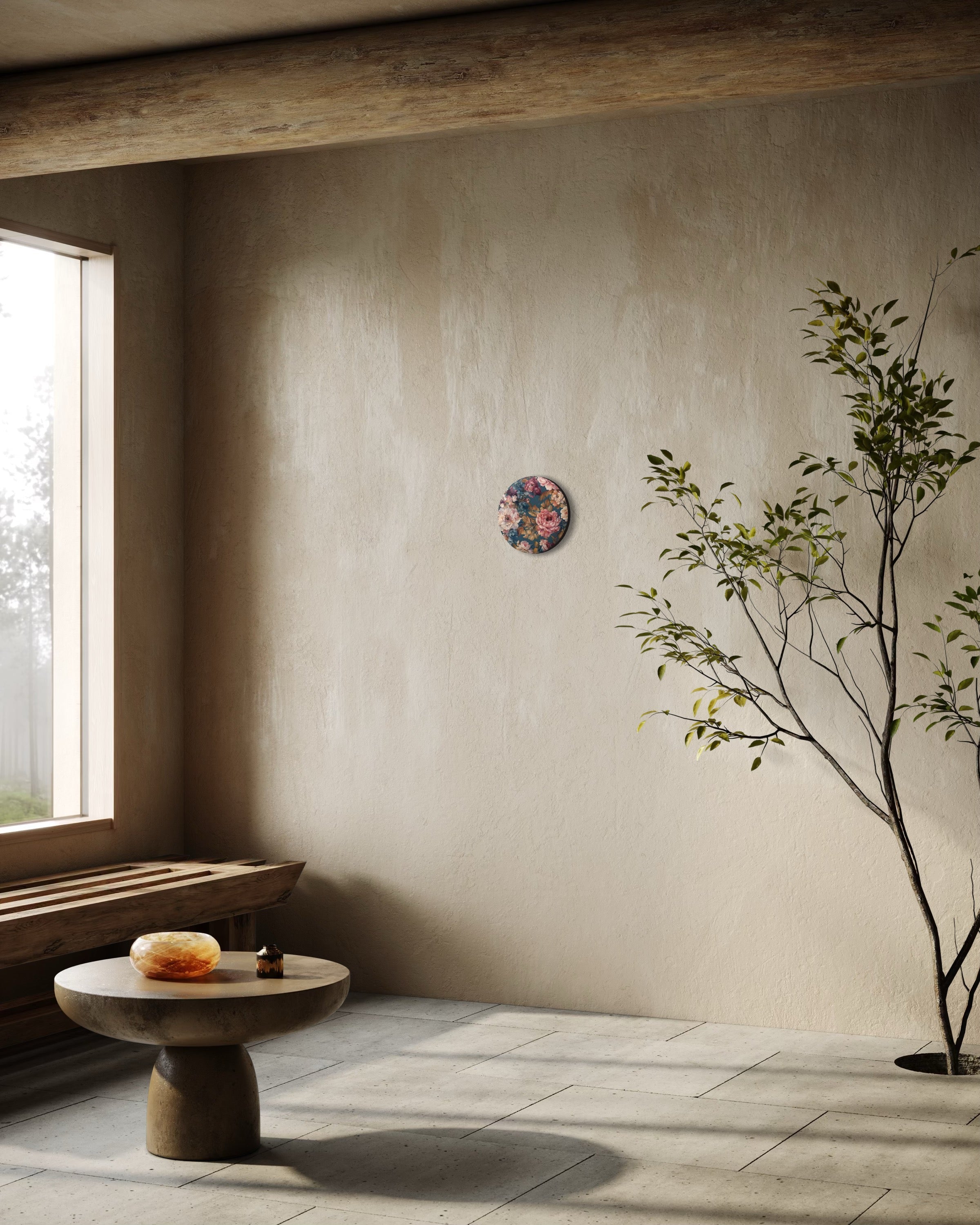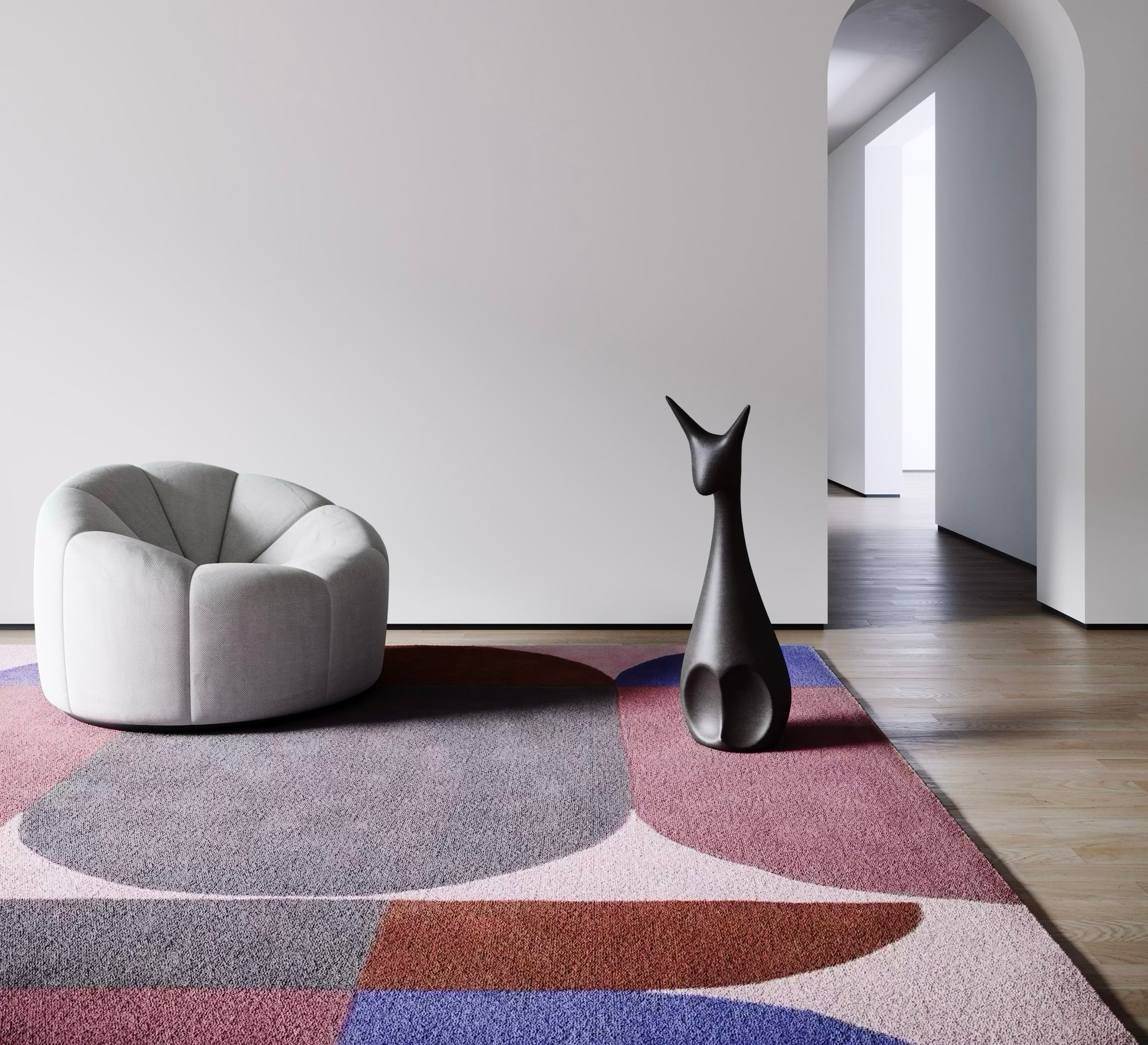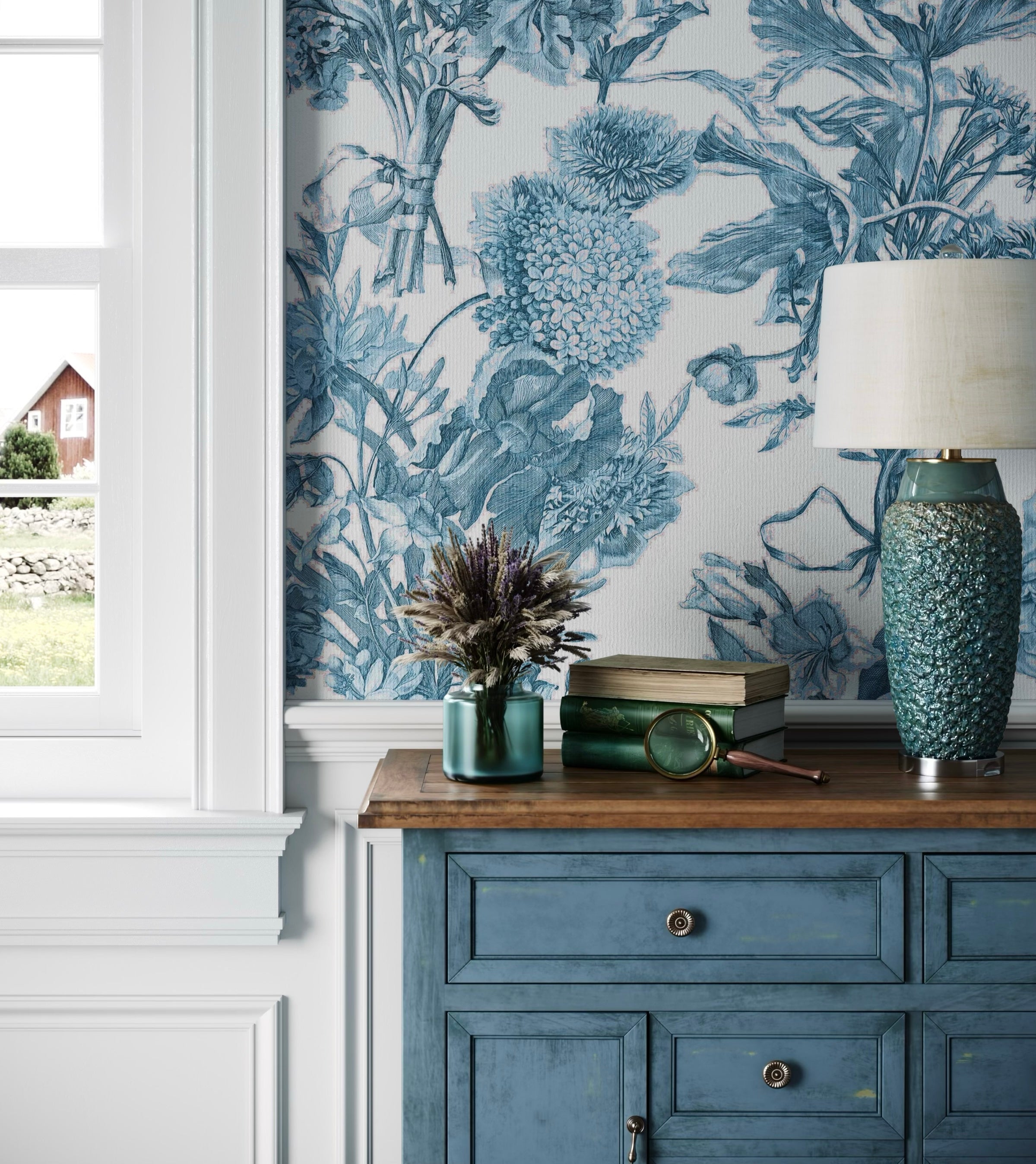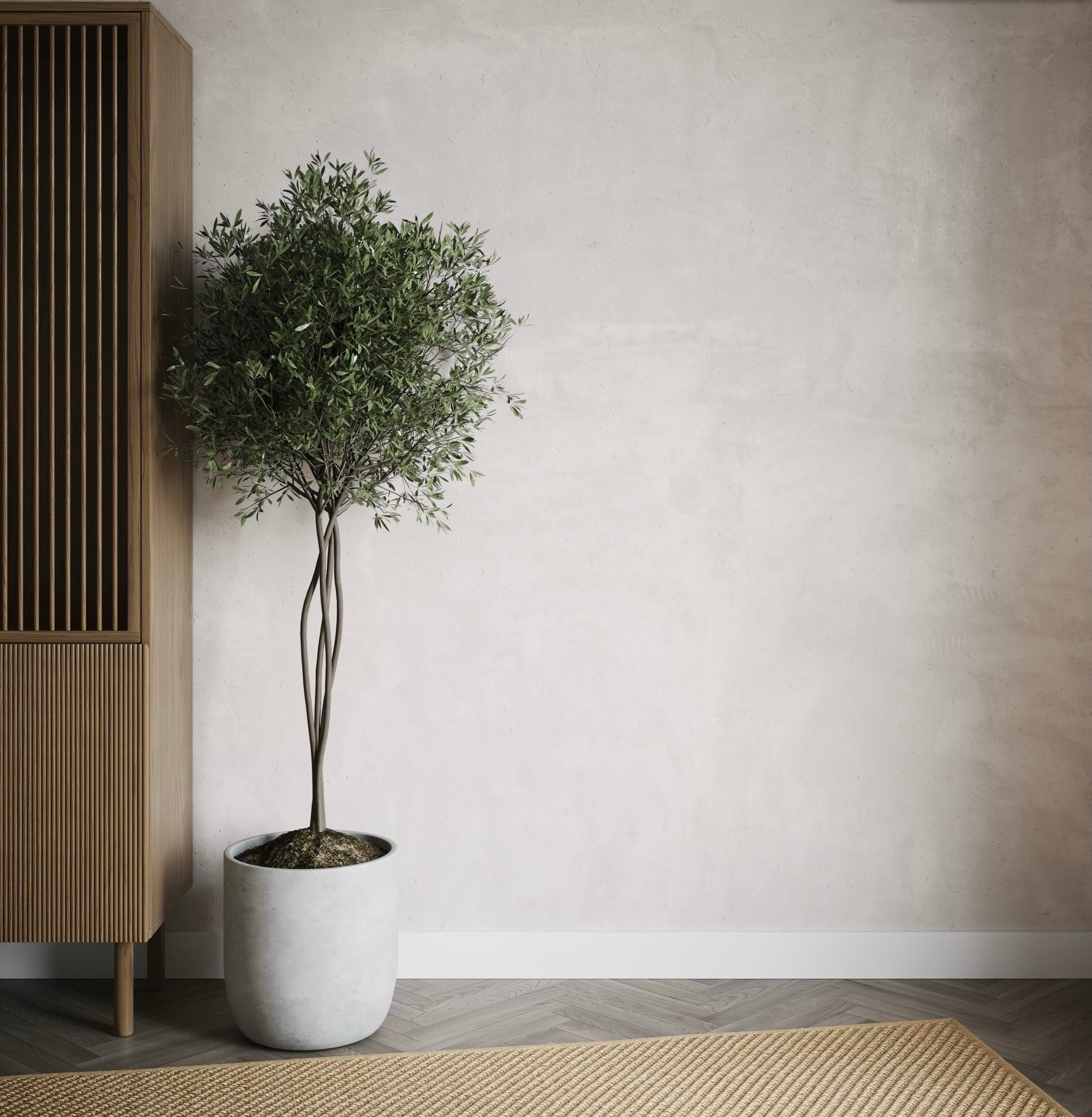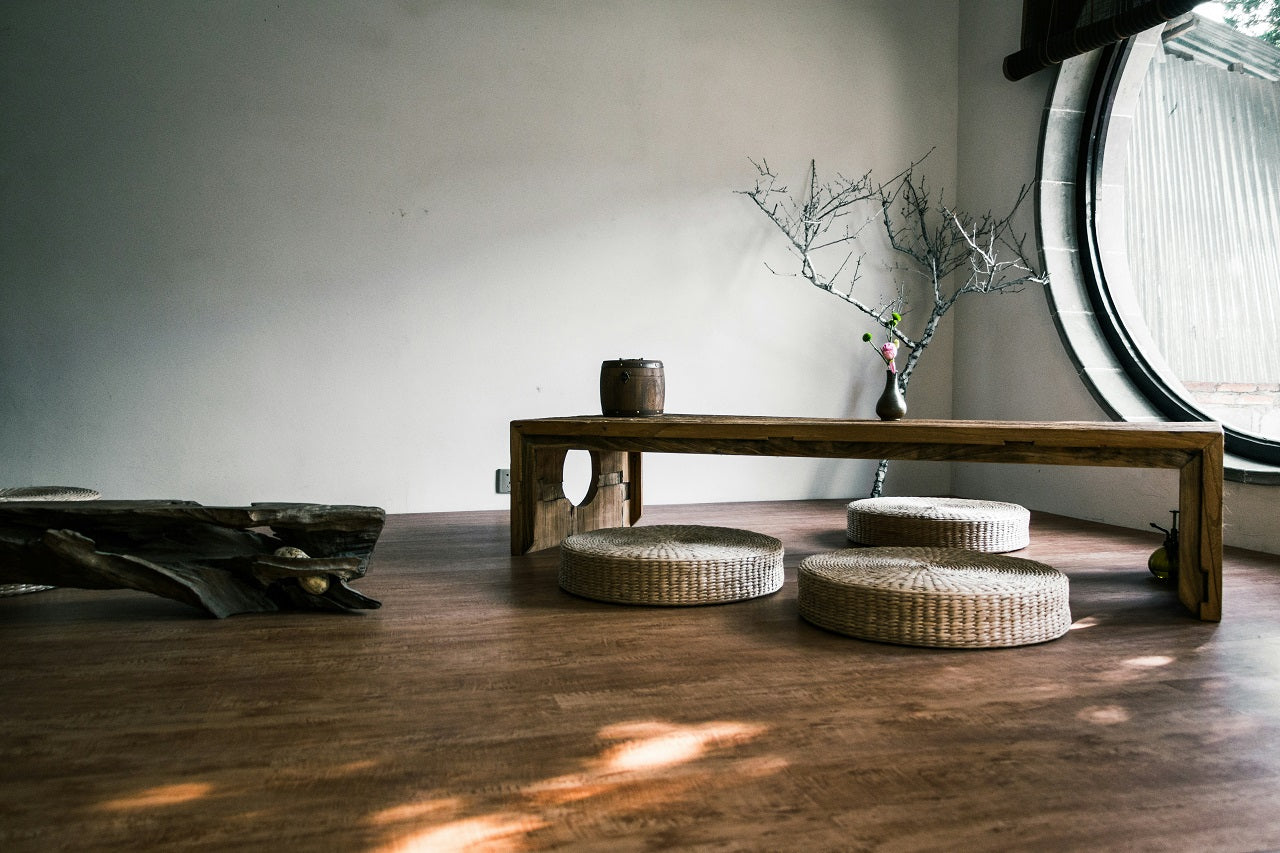
Meiji Era Home Décor: Blend of Tradition and Modernity
How a nation transformed its private spaces, and what it teaches us about living between worlds
In 1868, a fourteen-year-old emperor ascended to the throne and Japan opened its doors after two centuries of deliberate isolation. What followed was not merely political transformation, but something more intimate: a reimagining of domestic space itself. The Meiji Restoration (1868-1912) brought Western ships into Japanese harbours, but it also brought velvet sofas into tatami rooms, creating interiors that asked a profound question: Must we choose between heritage and progress, or can we inhabit both simultaneously?
The Meiji Era interior represents one of history's most fascinating experiments in living between cultures. These were not spaces of cultural surrender, but of deliberate synthesis. When a Japanese family placed a Victorian armchair beside a tokonoma alcove, they were not abandoning tradition; they were expanding its boundaries. This wasn't decoration. It was philosophy made tangible.
The Weight of Isolation, The Courage of Opening
For 214 years under the Tokugawa shogunate's sakoku policy, Japan existed as an intentional island. Foreign books were contraband. Christianity was suppressed. Only a trickle of Dutch and Chinese merchants accessed Nagasaki's carefully monitored port. Within this cocoon, Japanese aesthetics evolved into something exquisitely refined: the quietude of a tea room, the precise placement of a flower, the particular quality of light filtering through shoji screens.
Then, in 1853, American Commodore Matthew Perry's black ships appeared in Edo Bay with a message written in gunboat diplomacy: isolationism's time had ended. The subsequent Treaties of Amity and Commerce forced Japan's hand, but the Meiji government's response was not passive capitulation. Emperor Meiji's Charter Oath of 1868 declared: "Knowledge shall be sought throughout the world." What followed was cultural absorption at breathtaking velocity.
The Iwakura Mission of 1871 sent nearly half the Meiji government abroad for two years, studying Western institutions, industries, and yes, domestic arrangements. They returned with technical manuals, but also with ideas about comfort, privacy, and the relationship between furniture and daily life. Meanwhile, foreign advisers, the so-called oyatoi gaikokujin, arrived to teach everything from railway engineering to interior decoration. By the 1880s, Japan's urban elite were navigating a new kind of domestic landscape entirely.
The Traditional Foundation: Rooms That Breathe
To understand what changed, we must first inhabit what was. Traditional Japanese interiors were not spaces in the Western sense, fixed and singular in purpose. They were temporal, transformable. A room did not "contain" activities; it received them, then released them.
Tatami mats provided this flexibility. Woven from rice straw and covered with woven rush, each mat measured approximately 90 by 180 centimetres, creating a module. Rooms were measured not in square metres but in jo (tatami mats): a six-mat room, an eight-mat room. To walk across tatami in bare or stockinged feet was to experience texture, resilience, the faint scent of igusa rush. The mats absorbed moisture in summer, released warmth in winter. They were living surfaces that required care: periodic turning, eventual replacement, respect. You did not drag heavy furniture across tatami. You honoured its grain.
Much like the handcrafted rugs in our Sisu Loom collection, which honour weaving traditions from wool, jute, and cotton, tatami represented a commitment to natural materials and artisanal process. Both require understanding of fibre, respect for craft, and recognition that what we place underfoot shapes how we inhabit space.
Seating happened low, through zabuton cushions filled with cotton wadding. These flat, square cushions allowed the body to settle into relationship with the floor itself. To sit on zabuton was to feel the tatami beneath, to remain in contact with the earth. Tea ceremony seiza (formal kneeling) required this connection. Even casual sitting maintained this vertical intimacy. The Western chair, by contrast, elevated and separated the sitter from the ground plane. This difference was philosophical before it was ergonomic.
At night, rooms transformed. Futons emerged from cupboards, thick cotton-filled mattresses and coverlets that turned a study into a bedroom, a dining space into a sleeping chamber. Come morning, the futons disappeared again. This practice embodied ma, the Japanese aesthetic principle of negative space, of what is not there. A room full of permanent furniture could not breathe. A room that transformed with need remained alive to possibility.
Even architectural elements reinforced this fluidity. Shoji screens of wooden lattice and translucent washi paper divided spaces without severing them. Light passed through, softened and diffused. Sound travelled, muted but present. Privacy existed on a spectrum, not as absolute. The tokonoma alcove held a single scroll, a seasonal flower arrangement, objects that changed to mark time's passage. Every element served multiplicity. Nothing was merely one thing.
The Collision: When Permanence Entered
Western furnishings arrived not simply as objects, but as spatial philosophies. A Victorian sofa was not portable. It claimed its territory. Upholstered in velvet or leather, it announced: here is where sitting happens, and it happens precisely here, always. For Japanese homeowners raised in transformable spaces, this permanence required psychological adjustment.
Yet the embrace was genuine, not reluctant. By the 1880s, Tokyo's merchant class and samurai-turned-bureaucrats were installing Western-style reception rooms specifically for foreign visitors. These yōma (Western rooms) featured upholstered chairs arranged conversationally, side tables for tea service, perhaps a writing desk. They represented sophistication, worldliness, participation in modernity. They were also, crucially, separate. The rest of the house might remain traditionally Japanese. The Western room was a designated zone of cultural code-switching.
Contemporary homes can embrace this same philosophy of designated spaces with distinct characters. Our bedroom collection, featuring embroidered cushions and soft textiles, creates intimate sanctuaries, whilst our living room pieces blend artistry with comfort, allowing rooms to shift in mood and purpose.
Curtains and draperies brought their own revolution. Shoji screens filtered light democratically; every part of a room received similar illumination. Fabric curtains created gradients: drawn, the room darkened; parted, light flooded specific areas. Curtains also introduced colour and pattern in unprecedented ways. Victorian taste favoured heavy fabrics, tassels, layered drapery. Japanese textile traditions favoured subtlety: indigo, natural fibres, restrained pattern. The meeting produced unique hybrid treatments. Imagine shoji screens backed by lighter Western curtains, or imported brocades hung alongside traditional noren fabric dividers. These were not clashes but conversations.
Carpets and rugs layered over tatami created textural complexity unknown in traditional interiors. Persian rugs, British weaves, Chinese carpets arrived through newly opened trade routes. Their richness and warmth appealed aesthetically, but they also solved practical problems. Western leather shoes damaged tatami; carpets protected the mats whilst allowing households to adopt Western footwear customs selectively. More profoundly, rugs created "islands" within larger tatami spaces, Western sitting areas within Japanese rooms, zones where furniture could rest without damaging the traditional floor.
The genius of Meiji Era interiors lay not in wholesale adoption but in thoughtful juxtaposition. A room might feature tatami, zabuton for Japanese-style sitting, but also a Western sofa against one wall for elderly family members or foreign guests. Shoji screens might remain, but one window could host imported lace curtains. The old and new did not erase each other; they cohabited, creating spaces of genuine hybridity.
The Philosophy of the Between
What the Meiji interior teaches us transcends historical curiosity. These rooms embodied wakon yōsai: Japanese spirit, Western learning. This was the era's guiding principle, applied to everything from education policy to domestic space. It rejected the false binary of tradition versus modernity, insisting instead that one could honour heritage whilst embracing innovation.
Consider the practical wisdom: retaining tatami's natural comfort whilst adding upholstered seating for variety. Maintaining transformable rooms whilst designating one permanent Western-style reception area. Keeping shoji screens for interior division whilst adopting fabric curtains at street-facing windows for privacy from newly widened, trafficked roads. These were not compromises but integrations, each choice made with care.
The Meiji interior also democratised a certain cosmopolitanism. Before the Restoration, only the highest aristocracy accessed imported goods. After, the emerging middle class could purchase Western-style furniture, imported textiles, decorative objects from abroad. This wasn't mere consumerism; it was participation in a rapidly globalising world. To own a Western chair or Persian rug was to claim a seat at the modern table, to signal participation in Japan's transformation.
Yet the Japanese elements endured because they answered needs Western furnishings could not. Tatami's breathability in humid summers. Futons' space efficiency in small urban dwellings. Zabuton's portability for homes that still hosted traditional ceremonies. The best Meiji interiors did not abandon these; they expanded the vocabulary of possibility.
Bringing the Meiji Spirit Home: A Contemporary Approach
The Meiji Era interior offers rich lessons for our own time, when many of us inhabit multiple cultural influences. How do we honour tradition whilst embracing change? How do we create spaces that reflect complex, layered identities?
Begin with flexibility. Resist the tyranny of single-purpose rooms. Could your study transform into a guest room? Could your dining space host work during the day? Consider low seating options alongside conventional furniture, allowing rooms to shift in character. Our designer cushions offer this versatility, creating informal seating areas that can be reconfigured as needs change.
Layer textures thoughtfully. If you have hardwood floors, introduce textiles that reference both traditions. The natural fibres in our Sisu Loom collection, from wool to jute to cotton, echo the material honesty of traditional Japanese interiors whilst offering patterns from minimalist Scandinavian to intricate Persian and Moroccan motifs. These rugs can define areas within larger rooms, creating zones without walls.
Respect the vertical. Not all seating must happen at chair height. Floor cushions, poufs, or proper zabuton allow gatherings to occur at different elevations, creating intimacy and visual variety. This works particularly beautifully in meditation spaces, reading nooks, or children's rooms.
Control light with nuance. If you cannot install shoji screens, consider how you might soften light entering your space. Sheer curtains layered over heavier drapes create Meiji-like gradations. Our artisanal candles diffuse light similarly to traditional Japanese fixtures whilst complementing Western interiors, casting the kind of warm, meditative glow that transforms evening spaces.
Curate rather than accumulate. The tokonoma held one scroll, one arrangement. This principle of focused beauty remains powerful. Rotate decorative objects seasonally rather than displaying everything always. Let your space breathe. Our Sisu Tuin collection, celebrating botanical beauty, offers pieces you might rotate with the seasons, each one becoming a focal point in turn.
Consider the cultural biography of objects. A Victorian chair beside a Japanese tansu chest tells a story of meeting, of trade routes and cultural exchange. These juxtapositions become most meaningful when chosen intentionally, not accidentally. Our hallway collection, featuring art prints and décor ornaments, allows you to create these dialogues between eras and aesthetics.
Maintain natural materials. Both Japanese and Western traditions once honoured wood, cotton, wool, silk, paper. Our own era's proliferation of synthetics represents a departure from both lineages. Returning to natural materials honours the Meiji spirit of preserving what matters whilst adapting how we live. Every piece in our Sisu Works collection prioritises natural fibres and biophilic design principles, reconnecting contemporary interiors with this material wisdom.
Further Study
For those wishing to explore this period more deeply, several resources offer scholarly yet accessible entry points:
Museums and Collections:
- Victoria and Albert Museum, London: Their Japanese galleries include Meiji Era decorative arts and furnishings, with particularly strong textile and ceramic holdings
- Tokyo National Museum: Extensive Meiji period collections, including domestic objects and furniture, with English-language resources available online
- The British Museum: Japanese collection spans traditional and Meiji periods, with detailed catalogue entries exploring cultural exchange
Books:
- Morse, Edward S. Japanese Homes and Their Surroundings (1886, Dover reprint 1961): A contemporary Western observer's detailed account of traditional Japanese architecture and interiors, invaluable for understanding what the Meiji Era transformed
- Coaldrake, William H. Architecture and Authority in Japan (Routledge, 1996): Scholarly examination of architectural change during the Meiji period, exploring how political transformation shaped domestic space
- Watanabe, Toshio. High Victorian Japonisme (Peter Lang, 1991): Explores the reverse influence, examining how Japanese aesthetics shaped Victorian British interiors during the same period
Online Resources:
- The Metropolitan Museum of Art's Heilbrunn Timeline of Art History: Comprehensive entries on Meiji period arts and crafts, with high-resolution images and scholarly essays
- Japanese Architecture and Art Net Users System (JAANUS): Scholarly dictionary of Japanese architectural and art historical terms, essential for understanding technical vocabulary
- National Diet Library Digital Collections: Digitised Meiji Era documents, photographs, and publications, offering primary source access to period materials
A Living Legacy
The Meiji Era interior was never about choosing sides. It was about expansion, about creating homes capacious enough to hold multiple traditions simultaneously. In our own globalised moment, when many of us carry multiple cultural inheritances, this 19th-century Japanese experiment offers unexpected guidance.
Your home need not declare allegiance to a single aesthetic tradition. It can be, like the best Meiji interiors, a space of synthesis and dialogue, where inherited wisdom meets contemporary needs, where beauty serves life in all its complexity. The tatami mat and the upholstered chair, the shoji screen and the velvet curtain, they never were enemies. They were, and remain, partners in the art of living well.
At Sisuverse, we honour this legacy of thoughtful integration. Our curated collections draw from global traditions whilst respecting their origins, creating pieces that speak across cultures and eras. From our handwoven textiles to our botanical prints, each piece invites you to create your own space of beautiful hybridity. Explore our selections and discover how your home might become a sanctuary where past and present, East and West, tradition and innovation coexist in harmony.
